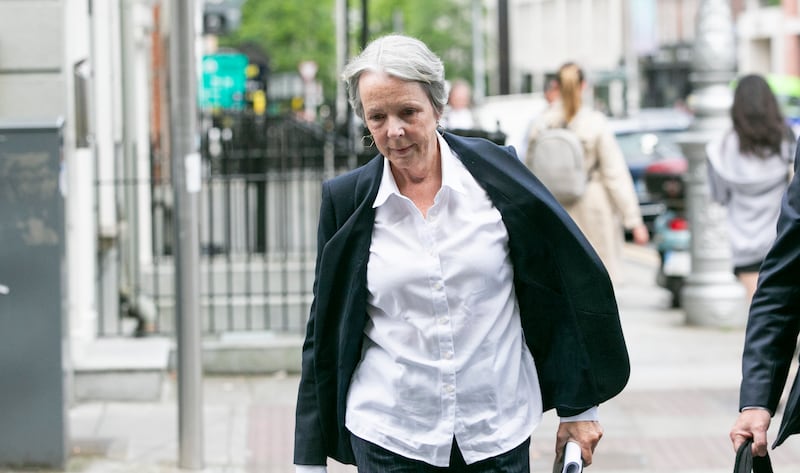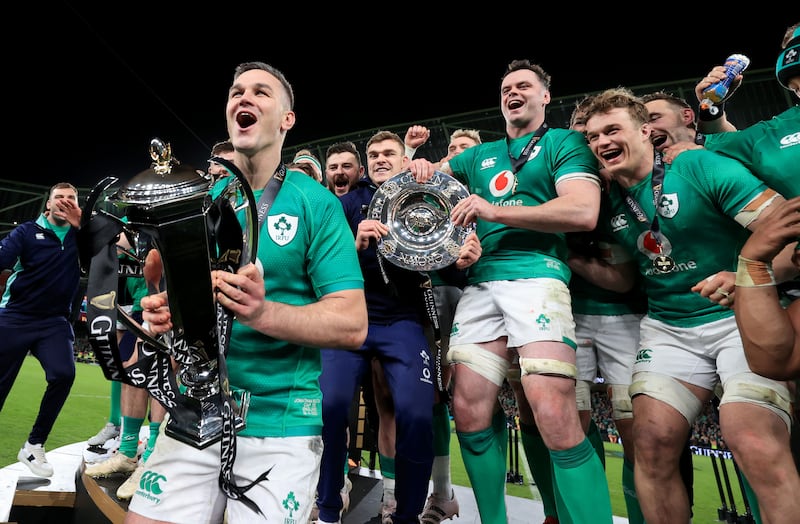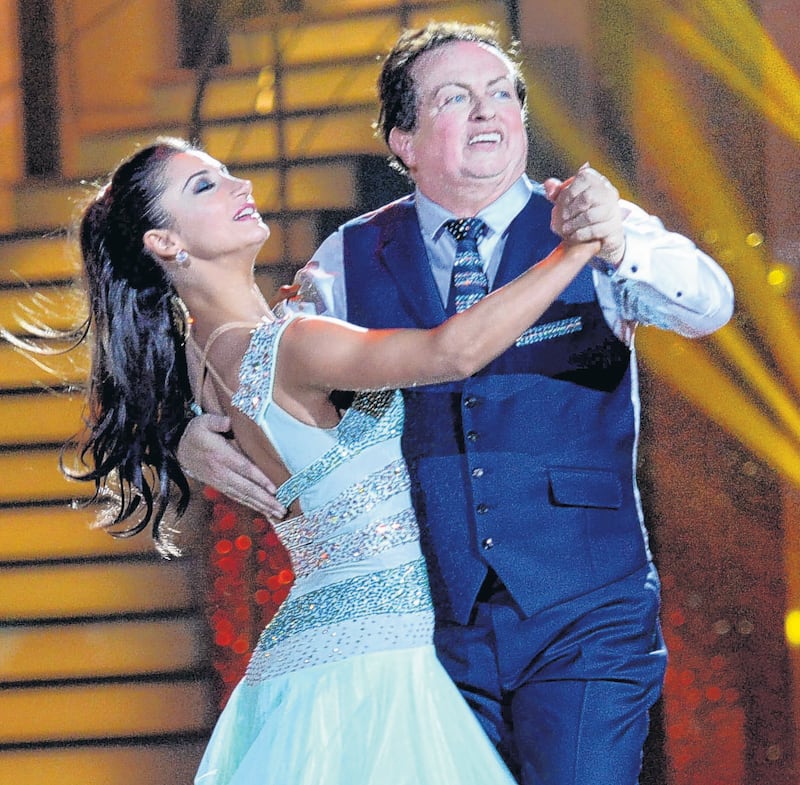As guests filtered into Dublin’s Stella Cinema for Virgin Media Television’s new season launch event, the big screen confidently declared it to be “playtime”.
Before the glow of fringed lamps and armchairs a deeper shade of red than its brash brand, the Virgin advertising line yielded to dramatic footage of handcuffs and incubators from “landmark factual” shows The Guards and Born Too Soon, with the breezier charms of dating series Grá ar an Trá served as a chaser.
In the Rathmines venue, restored with touches from the decade in which television was born, Virgin bosses – among them Virgin Media Ireland chief executive Tony Hanway – put their best foot forward to advertising clients, journalists and production partners.
An edgy back-to-school feeling now pervades much of the Irish television industry in advance of the critical months for advertising revenues as well as the start of the next commissioning cycle.
READ MORE
Industry sources suggest that if former RTÉ director general Dee Forbes was seeking interim funding support of €35 million in Budget 2024 before this crisis erupted, the figure being sought by her successor, Kevin Bakhurst, could now be close to €50 million
But while Virgin, part of John Malone’s cable giant Liberty Global, is far from immune from the sector’s commercial uncertainties and has not been silent on the current public media funding wrangles, any awkward realities it faces seem a world apart from the predicament of its rival in the adjacent postcode.
“A dangerous place,” was how RTÉ chairwoman Siún Ní Raghallaigh described Montrose’s position in the wake of its hidden payments scandal – a comment that came before Tubsgate was confirmed to have knocked more than €5 million, and counting, off the year-on-year trend for television licence fee sales and renewals.

Industry sources suggest that if former RTÉ director general Dee Forbes was seeking interim funding support of €35 million in Budget 2024 before this crisis erupted, the figure being sought by her successor, Kevin Bakhurst, could now be close to €50 million.
Whatever the outcome, any budget funding is a bandage. The longer-term treatment requires replacing the licence fee with a funding mechanism that reduces evasion and is logically designed for an age in which many people don’t own television sets and so are not liable, at present, to pay.
Endless headache
The Government fondness for dithering on this subject – an endless headache not just for RTÉ but for the wider Irish media ecosystem – looks ever more unsustainable in light of this summer’s accelerated collapse in licence fee revenues.
“Given the issues raised over the last weeks, we understand that providing additional interim funds will be a complex issue, but not supporting RTÉ when TV licence fee revenues are declining would put the broadcaster, its staff and suppliers in an extremely precarious position,” says Susan Kirby, chief executive of Screen Producers Ireland.
[ After a messy split, what next for Ryan Tubridy and RTÉ?Opens in new window ]
“Once adequate interim funding is agreed, we have an opportunity to create a vision for our national broadcaster with independent production at its centre.”
This vision is the crux of the matter for the Screen Producers Ireland-affiliated producers who are the largest suppliers of content to RTÉ. While RTÉ is the sector’s most important customer, spending €43.6 million on commissions in 2022, this figure remains well below the €80 million spent in 2007, the year when RTÉ's total revenues were at their €441.5 million peak.
The appointment last year of Ní Raghallaigh, a former chairwoman of TG4, could signal the Government’s dissatisfaction with this. As a publisher-broadcaster, TG4′s spend on independent commissions is a much higher percentage of its total budget.
The feeling may be in the Department of Culture and Media that the publisher-broadcaster model is a more efficient one for making television – though a previous NewERA “desk-based analysis” in 2015 was unable to make a fair comparison between the cost of in-house and independent productions. Any adoption of this view would have consequences for how RTÉ is staffed: the broadcaster employs about 1,800 people, and personnel-related expenses account for more than half its total operating costs.
TG4, for its part, will next week launch Cúla4, a children’s channel that will be carried by RTÉ-owned digital terrestrial television service Saorview. It’s a move that appears to go against the grain of current thinking on kids’ media consumption habits – namely, that they don’t watch linear channels. Nevertheless, enough of them do for it to represent something utterly vital to TG4: a means to encourage the intergenerational transmission of the Irish language.

For Alan Esslemont, TG4 director general, ongoing delays in reforming public media funding along lines that would divvy up the pot of money more equitably across the industry indicate that an “athrú meoin”, or change in the way of thinking, on the part of the State has yet to materialise.
‘Netflix levy’
A decision on the licence fee will come in 2024 at the earliest. Another potential source of some €25 million in annual funding, mostly for independent production companies – the so-called “Netflix levy” on streaming services and broadcasters operating in this market – is even more distant.
Long before the post-Tubsgate drop-off in licence fee receipts, the choice facing policymakers was to either shore up funding of the Irish audiovisual industry or watch it dwindle as international streamers and social media giants conquer all
“It’s our understanding that [media regulator] Coimisiún na Meán has tendered for the initial consultants to begin work on the first piece of research on the levy. However, it will be the second half of 2027 before any production in Ireland will benefit from the proceeds of the content levy,” says Kirby.
“In this regard, Ireland is truly trailing behind other EU countries.”
The situation frustrates the organisations – RTÉ, TG4, Screen Producers Ireland, Animation Ireland and the Irish writers’, directors’ and composers’ guilds – that came together to push for a levy-financed content fund as part of the legislative process for the Online Safety and Media Regulation Act.
Long before the post-Tubsgate drop-off in licence fee receipts, the choice facing policymakers was to either shore up funding of the Irish audiovisual industry or watch it dwindle as international streamers and social media giants conquer all. RTÉ's commercial revenues are a case in point. They sank from €245.5 million in 2007 to as low as €134.5 million in Covid-struck 2020, only recovering to €148.3 million the following year.
This plummet reflects a stark, fast shift in viewing patterns that is far from complete. In the first half of 2023, the volume of streams on broadcasters’ players in the Irish market was up 22 per cent year-on-year, with a 31 per cent gain for RTÉ Player and 10 per cent rise for Virgin Media Player, according to figures provided to The Irish Times by marketing group Core.
That was the good news. But broadcasters have yet to make this form of content consumption pay to the same extent as old-school linear audiences. And the bad news here was that, between January and June 2023, linear television viewing by people aged 15-plus fell 5.6 per cent year-on-year. That drop came on top of an 8.1 per cent shrinkage in the first half of 2022.
Worryingly, if unsurprisingly, the fall-off is concentrated among the young. For 15-34 year-olds, linear television viewing plunged 18.4 per cent in the first half of 2023. This followed almost as sharp a decline, 17.8 per cent, in the first half of last year. A typical 15-34 year-old now watches an average of 52 minutes of linear television every day, well shy of the average of two hours and 31 minutes for all adults.
Split rights
The words “Rugby World Cup” loom large in importance this autumn for both RTÉ and Virgin. The two broadcasters, in an alliance sealed before Forbes’s ignominious departure, have split the rights to the 48-game tournament, which begins with RTÉ's airing of hosts France against New Zealand next Friday.

The top 10 programmes on Irish television from January to June, as listed by Core, confirms how much of a viewing bonanza this one sport is to the two broadcasters, with the Six Nations – to which they also share the rights – occupying four of the top five spots, led by Virgin’s average audience of more than one million for Ireland versus England.
“The power of broadcasting to connect people is still very strong, and sport, especially, connects people,” says Seán Mac Giolla Phádraig, RTÉ's interim head of channels.
While the rugby audience will migrate to Virgin for its games, RTÉ will still be able to use the tournament as “a platform to talk about other stuff” – including the documentaries commissioned by Mac Giolla Phádraig in his other role as group head of factual.
The one non-rugby programme in the top five is Ryan Tubridy’s last episode of the Late Late Show, which drew an average audience of 668,000 on RTÉ One
Virgin also appears unbothered by the fact that half the fixtures are on the other side. “We tend to just go for it [on scheduling]. We should always offer viewers an alternative,” says Anthony Nilan, Virgin’s head of content strategy.
Still, with ITV imports I’m a Celebrity ... Get Me Out of Here! and the revived Big Brother also on the way before the end of 2023, Virgin will delay showing The Vanishing Triangle, a co-production that will debut on Sundance Now in the US later this month, and Baz Ashmawy’s comedy drama Faithless, “until we can give them the love and attention they need”.
[ Baz Ashmawy: Growing up mixed race, people would remind me, ‘You’re not Irish’Opens in new window ]
This is “nice problem to have” territory for Virgin. A softer summer run this year for Love Island will have been less fun, but Nilan says the broadcaster will “never just rest on one brand” and is sanguine about the challenges of attracting viewers.
“No matter what, with content you always have to fight to get attention. You can’t take your audience for granted. What is happening now is people are more discerning and we have to react to that.”
Biggest audiences
The top 10 ratings list for the first half of 2023, however, is also an illustration of the degree to which broadcasters rely upon sport and a select few non-sport hits for their biggest audiences.
The one non-rugby programme in the top five is Ryan Tubridy’s last episode of the Late Late Show, which drew an average audience of 668,000 on RTÉ One, making it the fourth biggest broadcast of the January-June period. This was much higher than the Late Late’s normal performance and is unlikely to be regularly repeatable, even if Patrick Kielty initially draws a huge, curious viewership.

In sixth place was the most-watched episode of RTÉ's enjoyable gangster family drama Kin, with an average audience of 593,000. Alas, the fate of Kin is as murky as that of the Dublin it depicts – its main funder, the Canadian company Bron Studios, recently filed for bankruptcy.
In ninth, with 478,000 viewers on RTÉ One, was Dancing with the Stars. The entertainment programme made by Larry Bass’s company Shinawil is set to return, despite much speculation to the contrary, in January. Those spangles may not seem political, but they are: Virgin Media Television has cited Dancing With The Stars in the past as an example of a “commercial” show that RTÉ should not be in the business of broadcasting.

Alarmingly from both RTÉ and the independent production sector’s perspective, the Tubridy fiasco has triggered an avalanche of similar commentary.
“There is a lot of debate going on about public service broadcasting and what it should be,” says Mac Giolla Phádraig. “I think there is a massive value in entertainment shows – big entertainment shows. If we can bring people together and remind them that they live in a society where they have connections with other people, there is a huge value in that.”
Indeed, Taoiseach Leo Varadkar and other Fine Gael ministers – perhaps newly mindful of the capacity of properly resourced indigenous news operations to act as a bulwark against division-stoking, misinformation-spreading machines – are now enthusing about the merits of public media like never before.
At Screen Producers Ireland, Kirby detects a realisation in political circles that a media landscape without RTÉ would have “a negative effect on the national conversation”.
“The need for significant licence fee reform, along with internal reforms in RTÉ, is being treated with more urgency now than it was before the controversy came to light in June,” she says.
Straight talker
Screen Producers Ireland has met Catherine Martin, the Minister for Culture and Media, twice since then. Martin’s department is understood to be breathing sighs of relief that Bakhurst is a straight talker, aware of the requirement for greater transparency and compromise on RTÉ's part.
But there is acknowledgment within the industry too that as far as those internal reforms go, he is constrained by the very same politics that is pushing for them to happen.
Rugby or no rugby, dancing or no dancing, Irish television is, inescapably, only one small component of a fiercely contested attention economy – a dizzyingly global business in which the one constant is the off button. As the off-screen drama winds on, few are sitting comfortably.



















